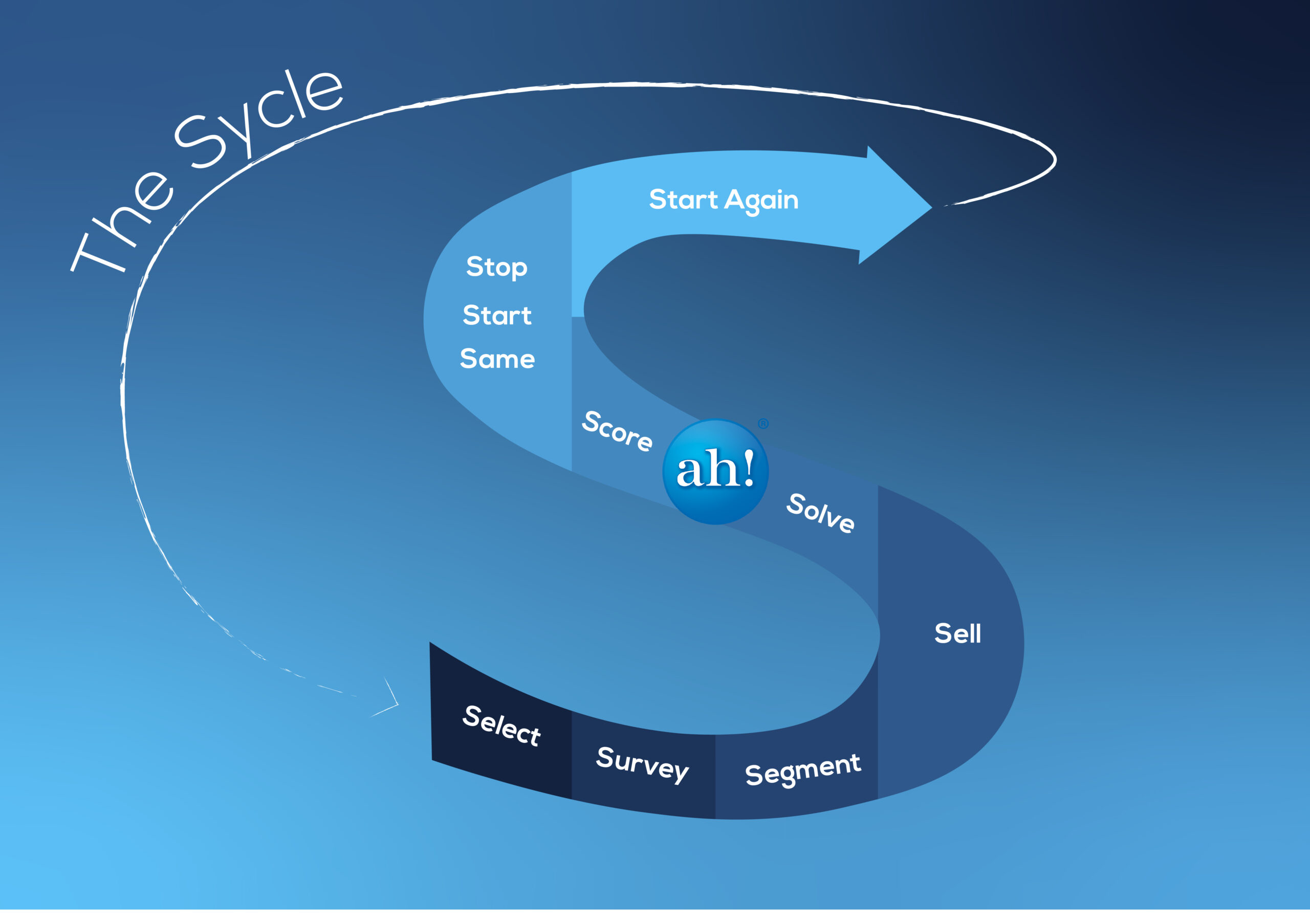The fourth step in the Population Health Sycle (PHS) framework is Sell. While many are reluctant to use the word “sell” in healthcare, there is much that can be learned from the retail industry about engaging individuals and using those approaches to get them engaged in a population health program. Selling the population on joining your program and the importance of healthy behaviors and preventive measures can help reduce the incidence and severity of chronic conditions, as well as lower healthcare costs. Too many programs have low enrollment, or enroll only the “worried well”. If one expects to move the needle on the population in terms of improved outcomes and lower costs, high enrollment percentages are critical to ensure that one is not only helping the high-risk maintain or improve their health but also by enrolling and keeping those in lower-risk buckets from moving into the high-risk ones. So sell it is.
Selling the population can be done using a variety of strategies, including direct outreach from the program, referrals or recommendations from physicians and their teams, community-based outreach, social marketing campaigns, and health education programs. These strategies can be tailored to the specific needs and characteristics of the population, as identified in the previous steps of the PHS framework.
characteristics of the population, as identified in the previous steps of the PHS framework.
The typical approach has been telephone calls or other direct outreach from the program team, but referrals from physicians and their teams are very effective. The use of Community-based interventions involves engaging the population through community organizations, schools, and faith-based institutions which can be effective for certain populations. These interventions can include health fairs, wellness programs, and support groups. By involving the community in the planning and implementation of these interventions, population health programs can build trust and support for engaging with the program and implementing healthy behaviors.
Social marketing campaigns involve engaging in the program through social media, advertising, and other forms of mass communication. These campaigns can be tailored to specific subgroups based on age, gender, ethnicity, and other factors identified in the segmentation step of the PHS framework. For example, a social marketing campaign aimed at young adults may focus on the dangers of smoking, while a campaign aimed at seniors may focus on fall prevention. The social media campaigns can be used to draw individuals in to make them aware of and ultimately engage with the program.
Health education programs involve providing information and resources to help individuals make informed decisions about their health. These programs can be delivered through in-person or online formats and can cover a wide range of topics, including nutrition, physical activity, and stress management. By providing access to credible and accurate health information, healthcare providers can empower individuals to take control of their health and use these educational tools as entry points into a more formal program.
In addition to these strategies, healthcare providers can also use incentives and rewards to encourage healthy behaviors. This is where programs can benefit from incorporating the principles of behavioral economics and readiness to change.
Behavioral economics is the study of how individuals make decisions and the factors that influence those decisions. By understanding the underlying psychological and behavioral factors that affect decision-making, programs can design interventions that are more effective in enrolling patients in their programs and then promoting interactions and healthy behaviors.
For example, one can use behavioral economics principles to design incentive programs that are more effective in motivating individuals. Research has shown that people are more motivated by immediate rewards rather than delayed rewards. Therefore, healthcare providers can design incentive programs that provide immediate rewards, such as discounts on healthy food options or gym memberships. We were very successful in enrolling individuals in our Medicaid disease management programs through the use of gift cards. There are several other behavioral economic approaches that one can explore and integrate into the program.
Another important factor to consider in the Sell step of the PHS framework is the readiness to change of the individual. Readiness to change refers to an individual’s willingness and ability to adopt healthy behaviors. Being sure to Survey for readiness to change as mentioned in the Survey Step is critical. Understanding where the individual and population fall on the readiness to change continuum can help healthcare providers design interventions that are more effective in promoting healthy behaviors.
Healthcare providers can use motivational interviewing techniques to assess an individual’s readiness to change and tailor interventions accordingly. Motivational interviewing is a patient-centered counseling approach that is designed to help individuals resolve ambivalence and increase motivation to change. By using motivational interviewing techniques, healthcare providers can identify barriers to behavior change and work with individuals to develop a plan for behavior change that is achievable and sustainable.
Selling the population on enrolling in your program, maintaining ongoing participation, and engaging in healthy behaviors can be challenging. Many individuals face social, economic, and environmental barriers to healthy behaviors. For example, individuals living in low-income neighborhoods may have limited access to healthy food options and safe places to exercise. There may be trust issues. Program providers must address these barriers and work to create environments that support enrollment, ongoing engagement, and the practice of healthy behaviors.
In conclusion, the Sell step of the PHS framework is important for improving population health outcomes. By engaging the population and promoting healthy behaviors, healthcare providers can prevent or manage chronic conditions, reduce healthcare utilization and costs, and improve the overall quality of life. Healthcare providers can use a variety of strategies, including community-based interventions, social marketing campaigns, health education programs, and incentives and rewards, to sell the population. The next step in the PHS framework is Solve, which involves developing and implementing interventions that address the specific health needs of the population.
So whether you’re looking for assistance developing population health management programs, or improving one you already have contact us or call us at 904*613*1224.

